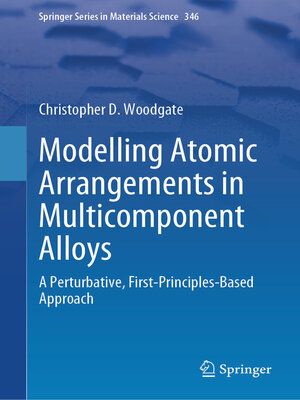Modelling Atomic Arrangements in Multicomponent Alloys
ebook ∣ A Perturbative, First-Principles-Based Approach · Springer Series in Materials Science
By Christopher D. Woodgate

Sign up to save your library
With an OverDrive account, you can save your favorite libraries for at-a-glance information about availability. Find out more about OverDrive accounts.
Find this title in Libby, the library reading app by OverDrive.



Search for a digital library with this title
Title found at these libraries:
| Library Name | Distance |
|---|---|
| Loading... |
This book provides a comprehensive overview of a computationally efficient approach for modelling the phase behaviour of multicomponent alloys from first principles, describing both short- and long-range atomic ordering tendencies. The study of multicomponent alloy systems, which combine three or more base elements in near-equal ratios, has garnered significant attention in materials science due to the potential for the creation of novel materials with superior properties for a variety of applications. High-entropy alloys, which contain four or more base elements, have emerged as a particularly fascinating subset of these systems, demonstrating extraordinary strength and fracture resistance, among other desirable properties. The book presents a novel modelling approach for studying the phase behaviour of these systems, which is based on a perturbative analysis of the internal energy of the disordered alloy as evaluated within the Korringa–Kohn–Rostoker (KKR) formulation of density functional theory (DFT), using the coherent potential approximation (CPA) to average over chemical disorder. Application of a Landau-type theory to an approximate form of the Gibbs free energy enables direct inference of chemical disorder/order transitions. In addition, the perturbative analysis facilitates extraction of atom-atom effective pair interactions for further atomistic simulations. The connection between the arrangement of atoms in a material and its magnetic properties is also studied. By outlining and applying the proposed modelling techniques to several systems of interest, this book serves as a valuable resource for materials scientists, physicists, and chemists alike, seeking to understand and develop new alloy systems with enhanced materials properties.







